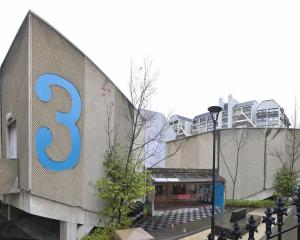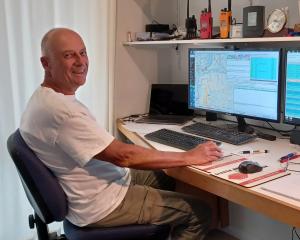
It’s coming to that time of year again when we start to think (or is it a little early?) about what presents we will be buying to have under the tree for the significant people in our lives. This one day in the year represents a pinnacle in consumption for many people when they buy gifts to celebrate this day.

These days, there is quite an array of bikes and likewise quality of those bikes too. Many bikes are completely fixable when something goes wrong but in many cases people do not know how to fix a bike and it ends up unused in a basement or garage and then gets sent to the landfill. Some bikes are not quite so fixable and end up being disposed of as well. Consequently, there are quite a number of bikes, in various conditions, ending up at the landfill. Last year, about 856 bikes were left at the Green Island landfill. This is about 5050kg worth of material.
The reason I know these figures are because Southern Youth Development (formally The Malcam Trust) has a waste minimisation contract with the Dunedin City Council to "rescue" the bikes that are taken to landfill, refurbish as many as possible and carefully dismantle and recycle the parts of those unable to be refurbished. Many of the bikes are of high quality and easily able to be refurbished and will provide many more kilometres for a lucky cyclist. However, other bikes are not so resilient and not built to last and these bikes can be difficult to refurbish and even recycle parts from.
The refurbished bikes are fixed, usually by young people who are trained and work alongside a bike mechanic/youth worker from Southern Youth Development (SYD). SYD goes to the University’s Sustainability Office where students learn how to fix and look after their own bike and into schools to work alongside young people to get bikes ready for the community. The programme is extremely successful as the following statement from one of the schools illustrates:
“The opportunity to learn how to fix bikes has allowed [our students] to deepen their engagement with something they already love. Secondly, the programme has sparked a genuine interest in learning among the boys. They have eagerly embraced the chance to acquire practical skills related to bike mechanics, showing a keen enthusiasm for each step of the learning process.”
Working alongside a youth worker, young people talk about their world as well as learn some valuable skills and feel a sense of achievement.
Some of the better bikes are sold to help sustain the programme but most are available for koha. In a recent bike grab held at SYD, members of the community picked up 88 bikes. There were whānau and flatties grabbing bikes for activities like having fun or getting to work. Mostly people receive a great bike that is in great condition and rideable for years to come.
There are many benefits of grabbing a "new to you" bike from SYD. Firstly, you are supporting fewer re-usable items going straight to the landfill. This results in fewer mined materials ending up in landfills and overall less landfill space needed. Plus, at a systemic level there will need to be fewer brand new bikes being produced. The process of manufacturing a bike involves the extraction and transformation of raw materials (such as aluminium and steel), the production and manufacture of the bike and its components, assembly, plus the logistics from each stage — extraction, production, and distribution to the final customer. It is estimated that the production of an average range bicycle for urban use, with a steel box and a weight of between 17 and 20kg generates 96kg of CO2. 1 As such, when we buy a "new to you bike" there are greenhouse savings all along the production chain.
Plus, using the bike also has many benefits. The European Cyclists Federation has calculated that when considering a complete life cycle, the carbon emissions from different types of transport are:
• Bicycle: 21g CO2/passenger/km travelled
• Electric-assist bicycle: 22g CO2/passenger/km travelled
• Passenger car: 271g CO2/passenger/km travelled
• Bus: 101g CO2/passenger/km travelled
This means that cycling vastly reduces the amount of CO2 emitted per passenger km. Further benefits are to the health (physical and mental) of the cyclist, reduction of noise and other pollutions, less space needed for infrastructure and less resources needed to produce bikes.
So, now that you are thinking of buying your young person or significant other a bike this Christmas, ask first — does it need to be brand new or new to you? If you are interested in exploring sustainable gift options, consider looking at refurbished or second-hand bikes, which not only reduce waste but also often come at a fraction of the cost.
Get in touch with Southern Youth Development for your bike options https://syd.org.nz/programmes/bikes-at-syd/.
1 https://tuvalum.eu/blogs/news/this-is-the-environmental-impact-generated....
2 https://ecf.com/groups/cycle-more-often-2-cool-down-planet-quantifying-c...













